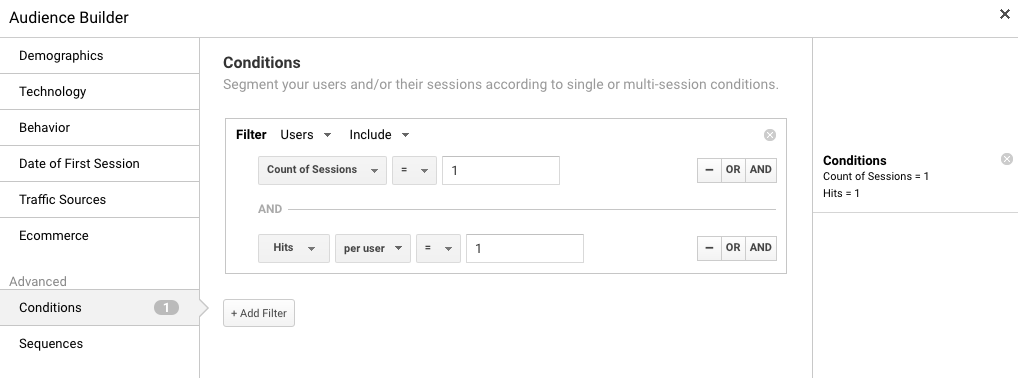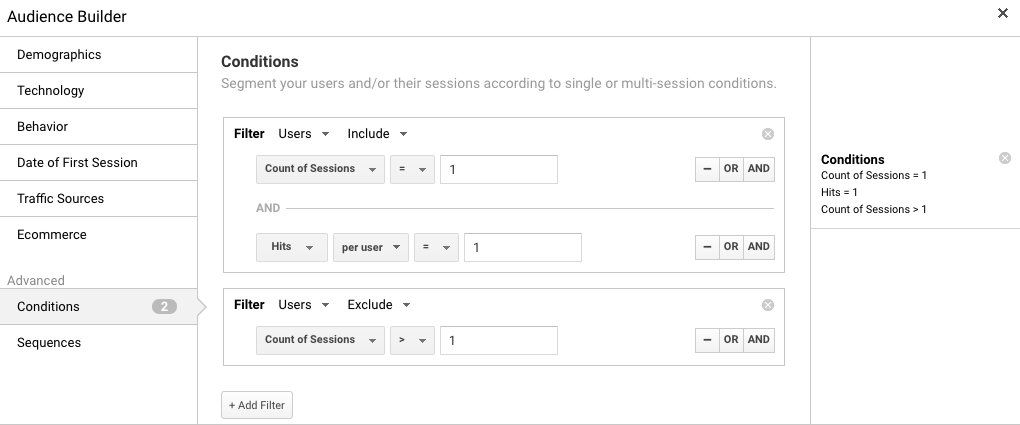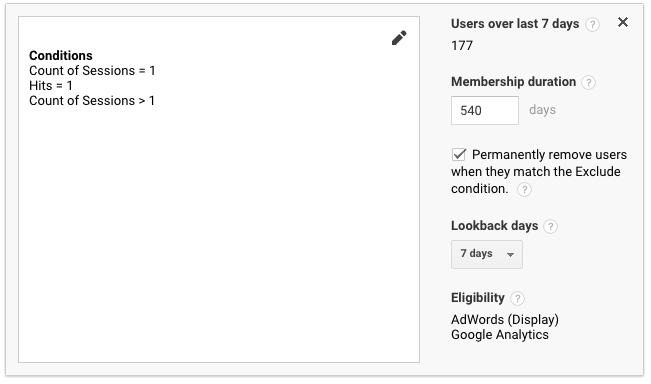No exclude filter = no early out parole for your GA audiences

Did you know if you don’t add an exclude filter to your Google Analytics (GA) configured remarketing audience that users remain in that audience, even if they no longer satisfy your include filter conditions, until the membership duration expires? In other words, there’s no “early out” parole for those users even if they no longer meet the criteria for being “locked up” in that audience.
We make it a practice of creating a GA audience to support client advertising that includes users (really device + browser combinations) that only have a 1 hit session on a digital property. Clients use this audience as an exclude target so they aren’t paying to present ads to folks that showed absolutely no interest in their digital property. We were so proud of ourselves for how we were helping our clients fight advertising waste. And then we found out we weren’t configuring these audiences correctly. It sucks to eat crow, but it’s always better for everyone to own your mistakes, make the correction, and move on. This post is us doing that.
Single session bouncers, the wrong way
Our configuration for the “single session bouncers” GA audience lists was “INCLUDE USERS with (a) count of sessions = 1 (AND) (b) hits per user = 1”.

Users (again, really device + browser combinations) with 1 session and 1 hit in that session are dynamically added to this audience based on the above conditions. Great. However, if the user returns to the website, if there is no exclude filter to remove them when their count of sessions exceeds 1, they remain on list for the membership duration. Not great. We thought the user would be removed from this audience automatically once the above include conditions were no longer true. Not so – include conditions only address the conditions for being “included”. We need to add “exclude” conditions to define when users get removed (exclude conditions also participate in the conditions required for adding a user in the first place).
State-based audiences help center article to the rescue
In reading the help center article on “state-based audiences“, we realized we can (and should) employ exclude filters to specify if & when users are removed temporarily or permanently from an audience.

Permanently remove users when they match the Exclude condition
When you add an exclude filter, you’ll notice an additional option to check a box to “Permanently remove users when they match the Exclude condition.”

The “tool tip” next to this option reads:
“Select this option to permanently remove users from the audience when they match the exclude condition. If you do not select this option, then users can be added back to the audience when they meet the include condition again. For example, users who have added an item to a cart since last purchasing vs. users who have added an item to a cart and never purchased. Audiences using permanent exclude conditions are not yet eligible for AdWords RLSA, DoubleClick Bid Manager, DoubleClick for Publishers, or Optimize.”
In our scenario, we do not want to check this box because we use this audience for AdWords RLSA and Google Optimize 360 targeting. The help center article on “state-based audiences” inventories scenarios where you might consider permanently removing users. However, if it means not being able to use audiences with those great Google products, and given the fact that users deleting their GA cookie voids their “permanent removal” from any audience anyway – we suggest you should need a very clear & specific reason to ever check that box.
Notes on employing state-based audiences
If you created an audience before the feature appeared in your Analytics account, you cannot edit that audience to make it State Based.
If you save an audience without an Exclude filter, you cannot subsequently edit the definition to add an Exclude filter. If you want to maintain the option to edit the definition to create a State Based audience, then incorporate an Exclude filter when you first create the audience.